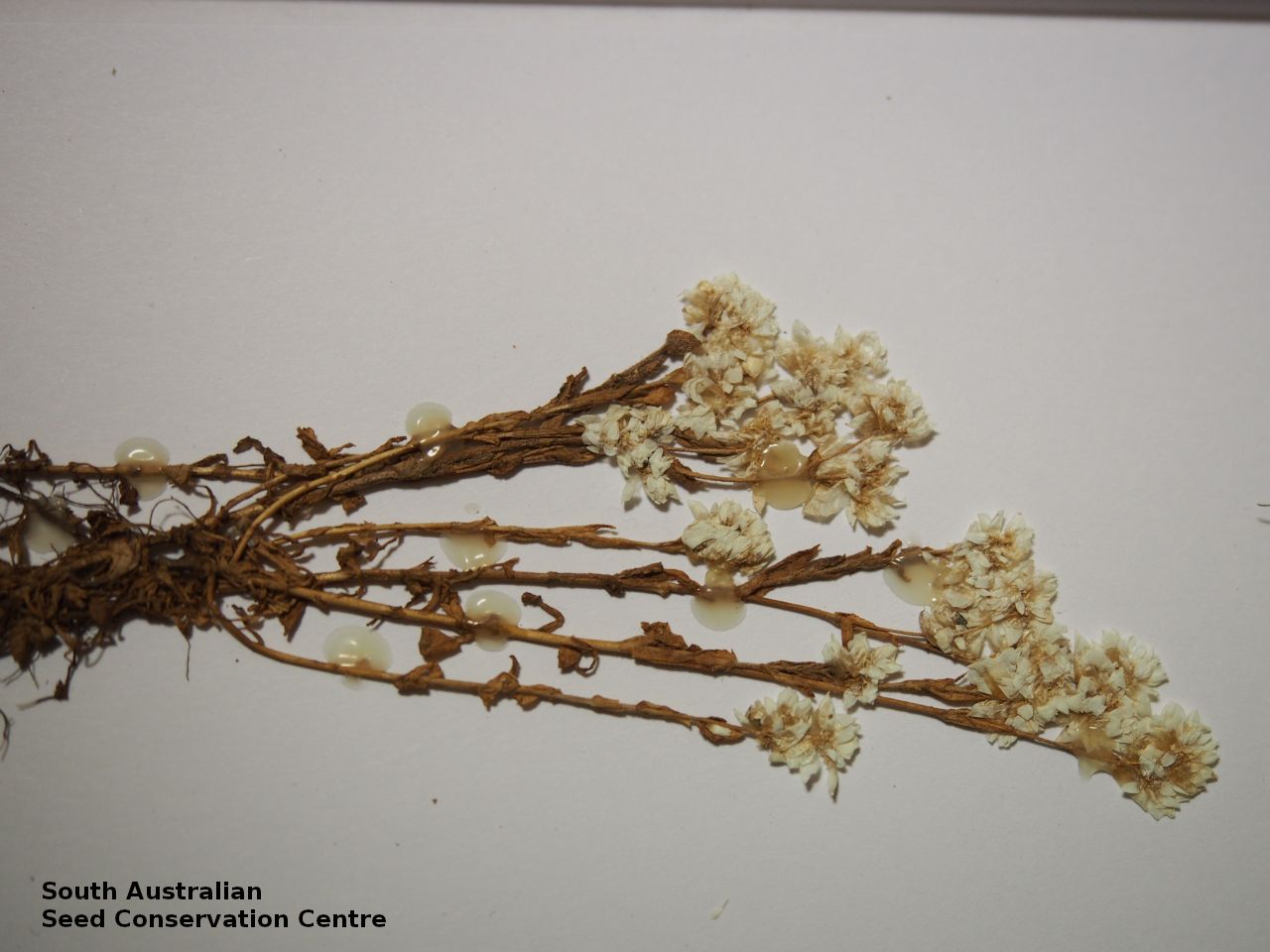
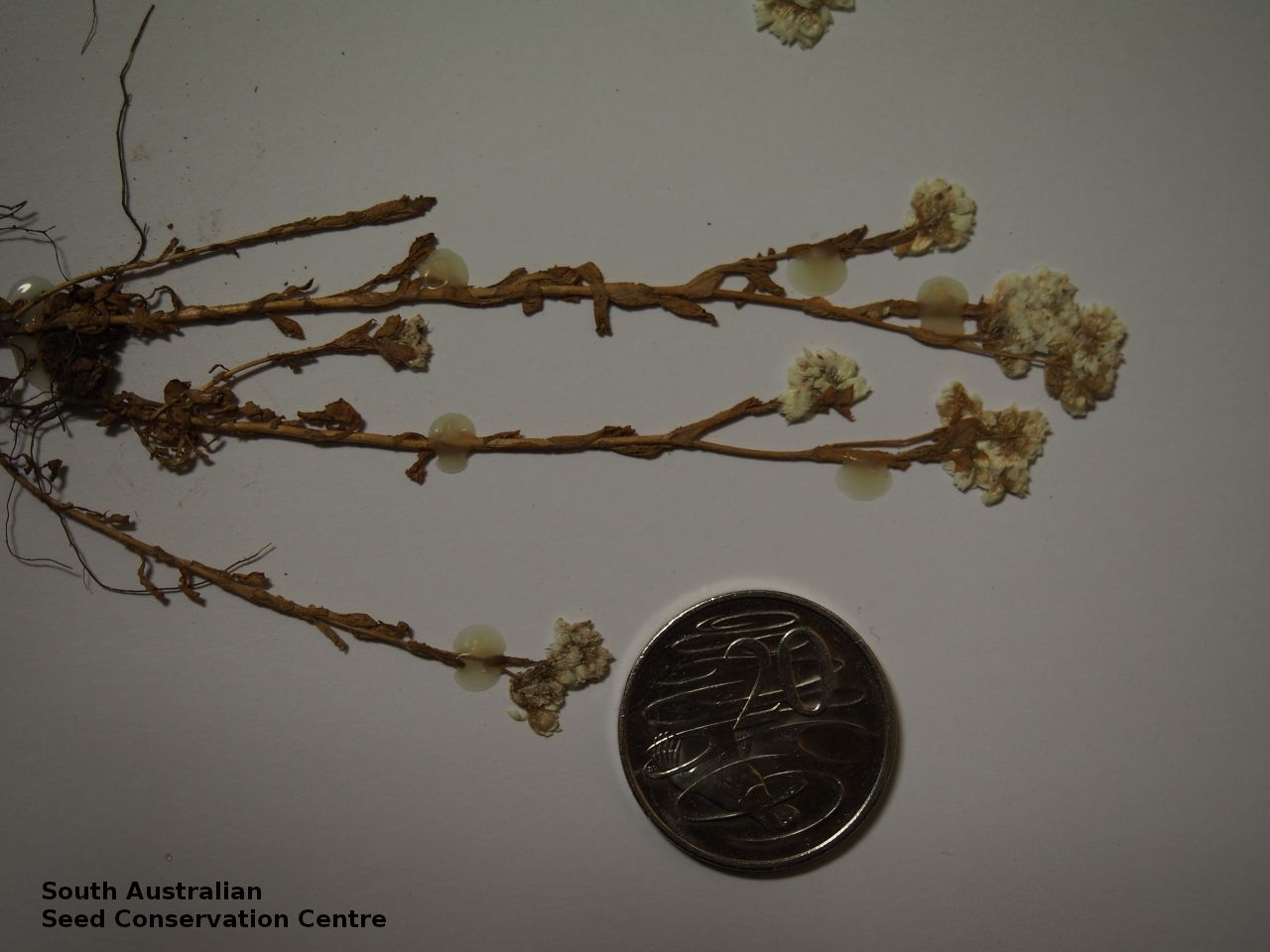
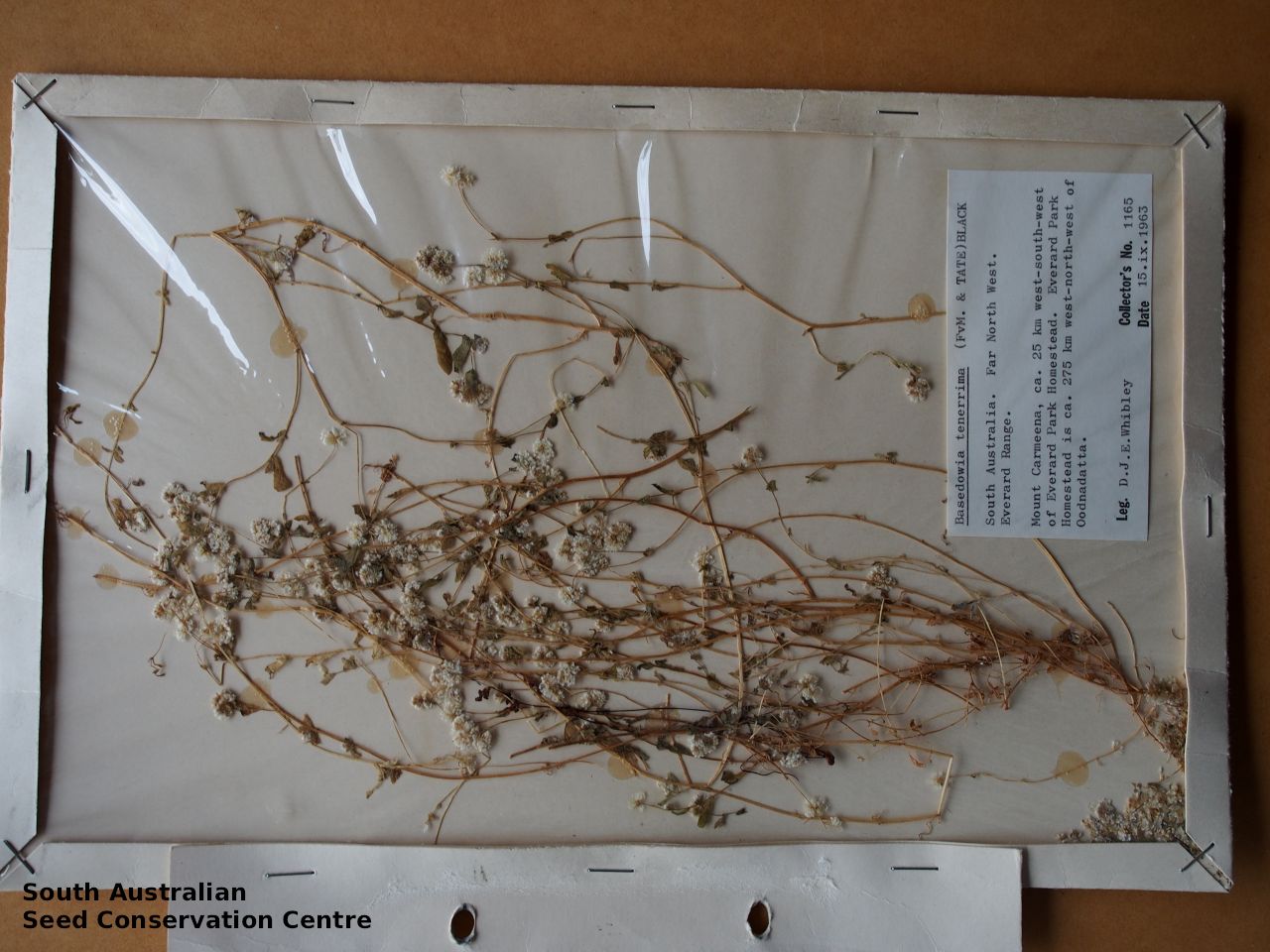
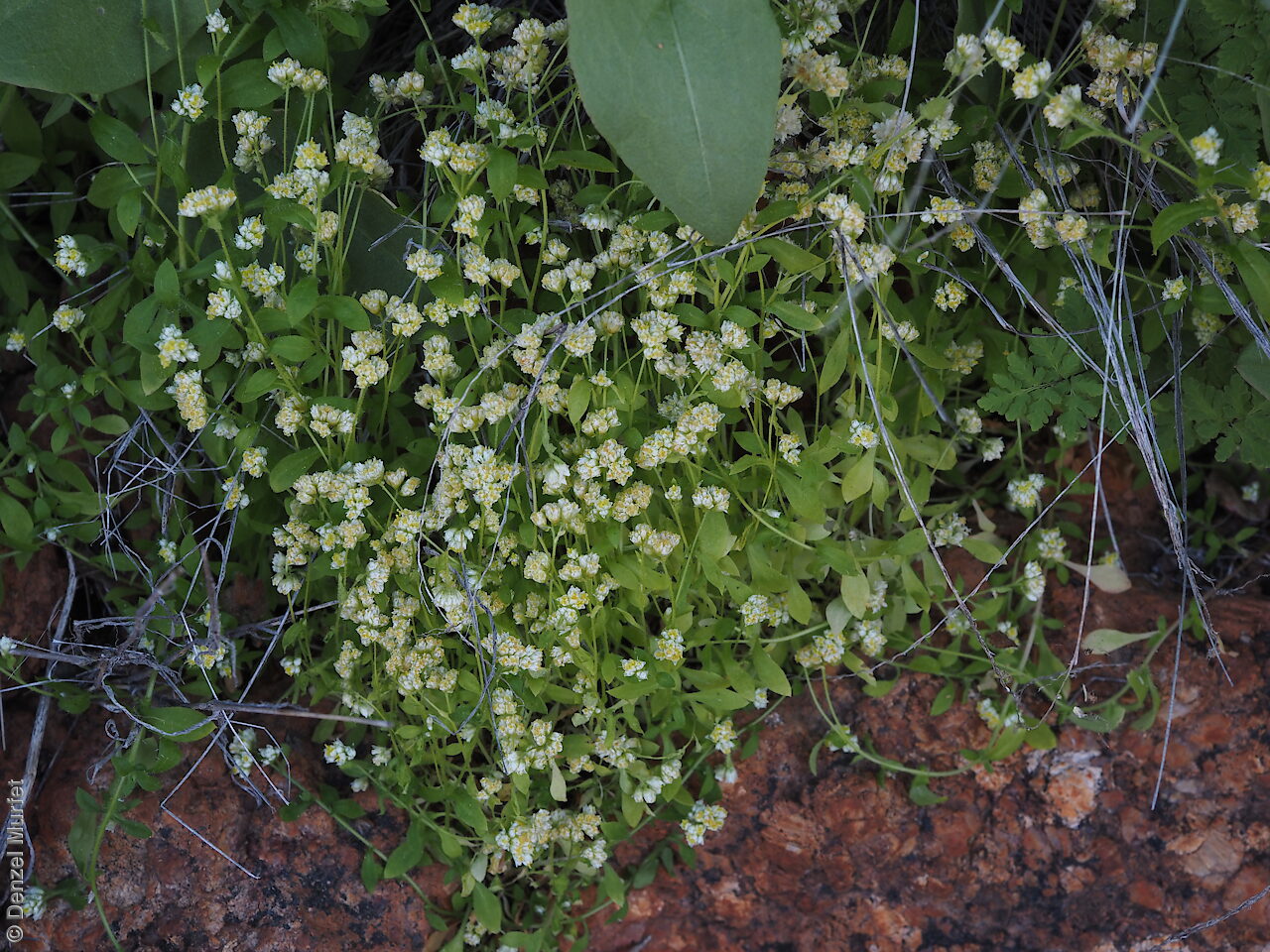
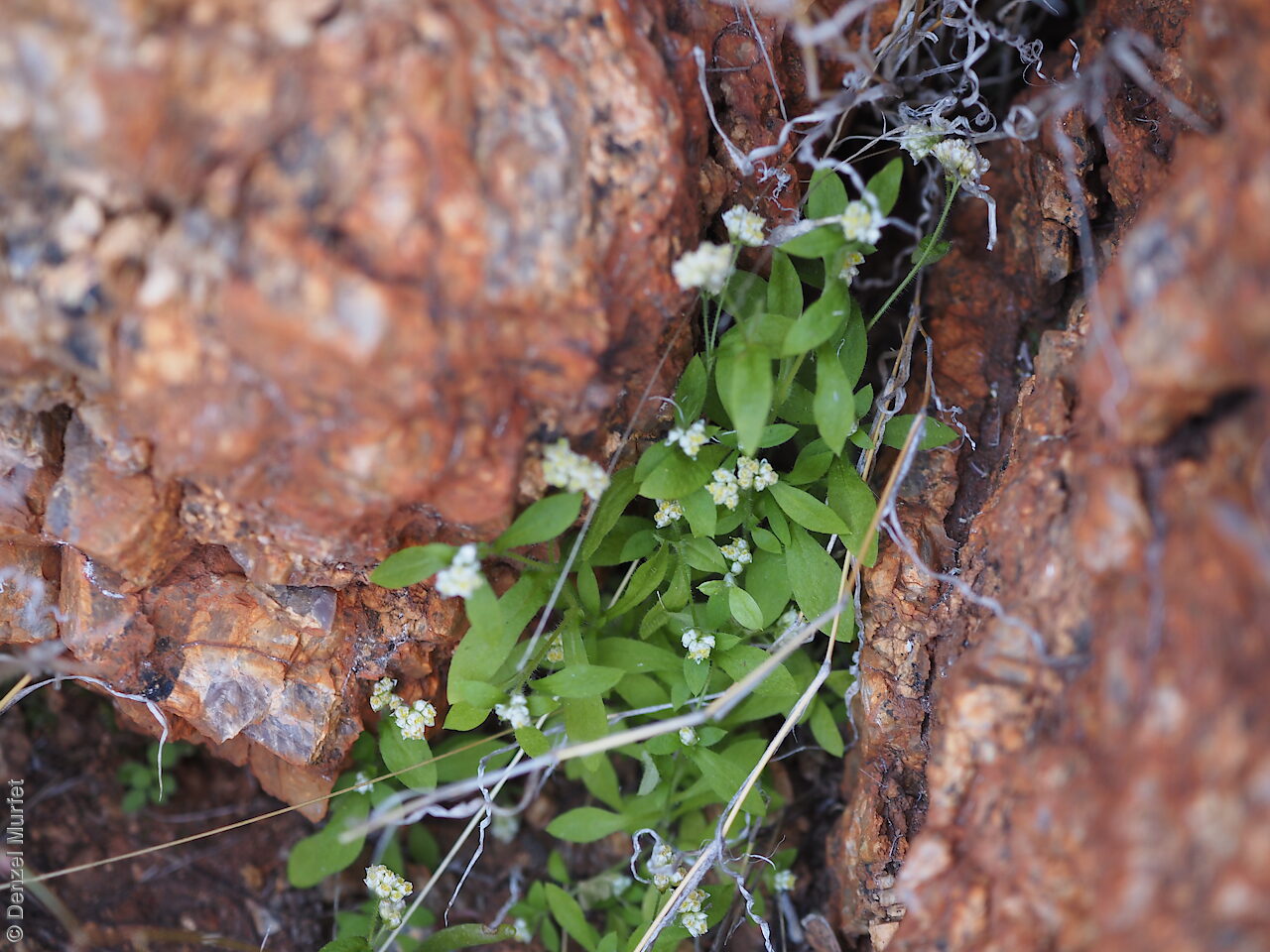
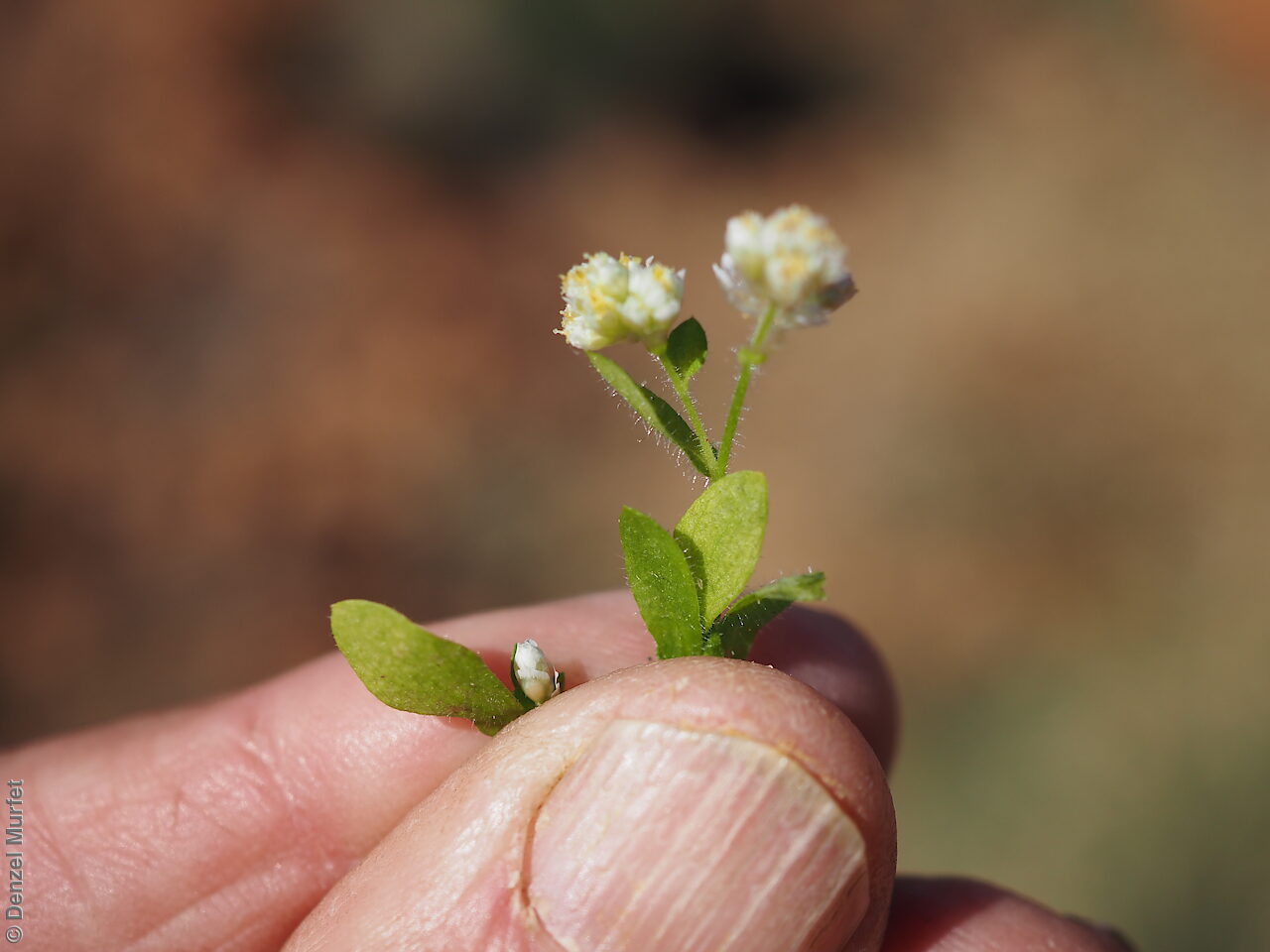
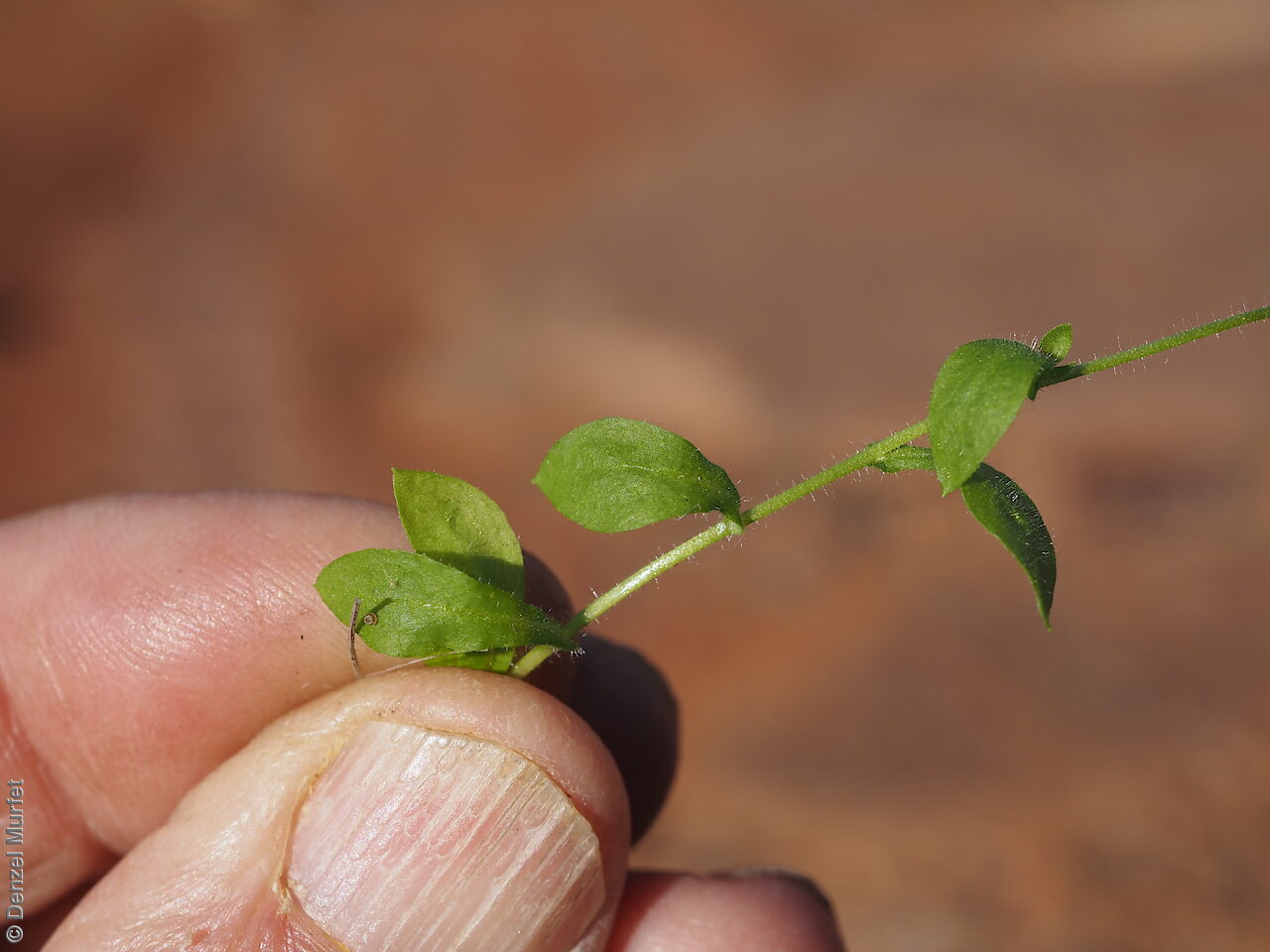
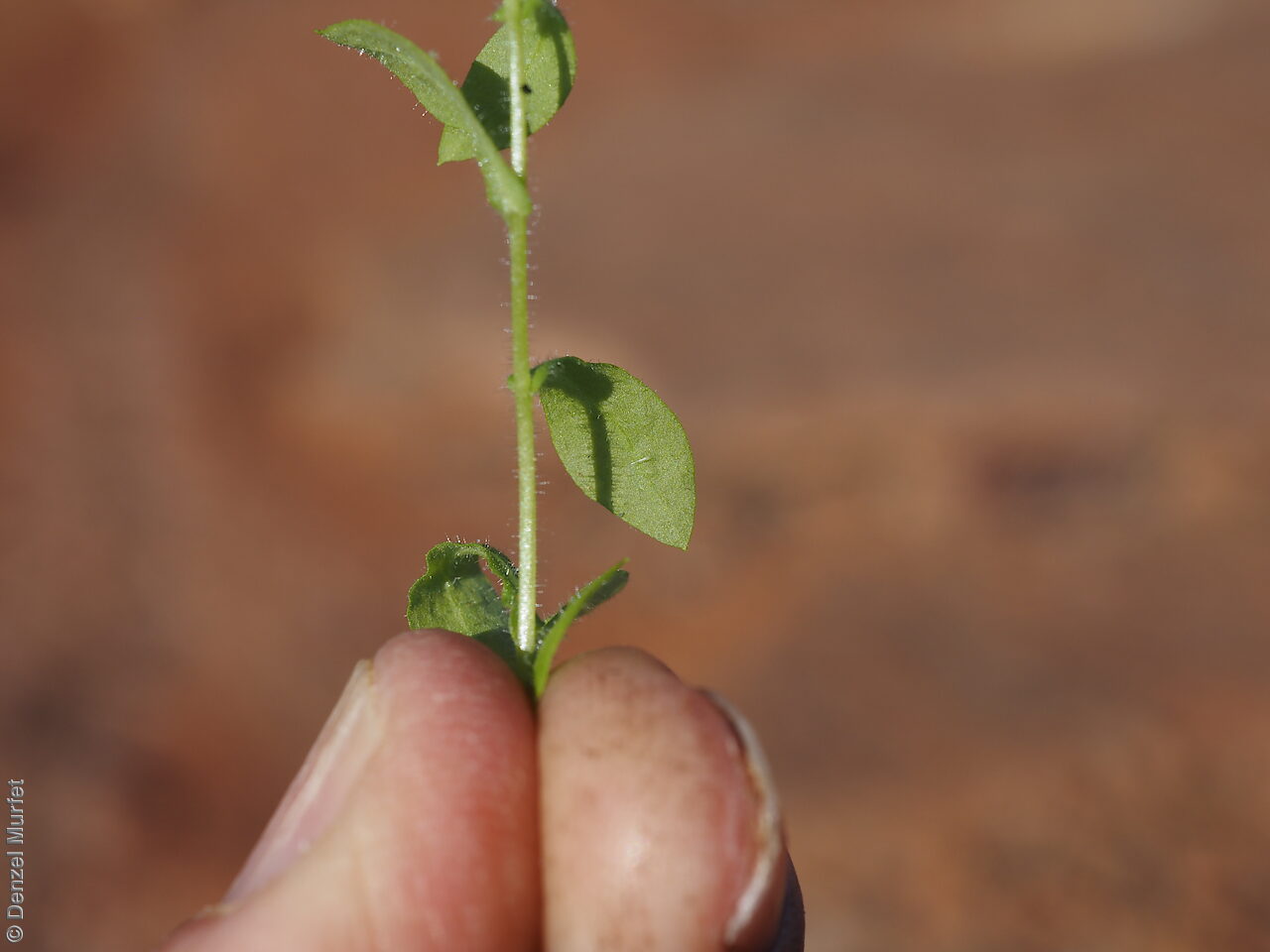
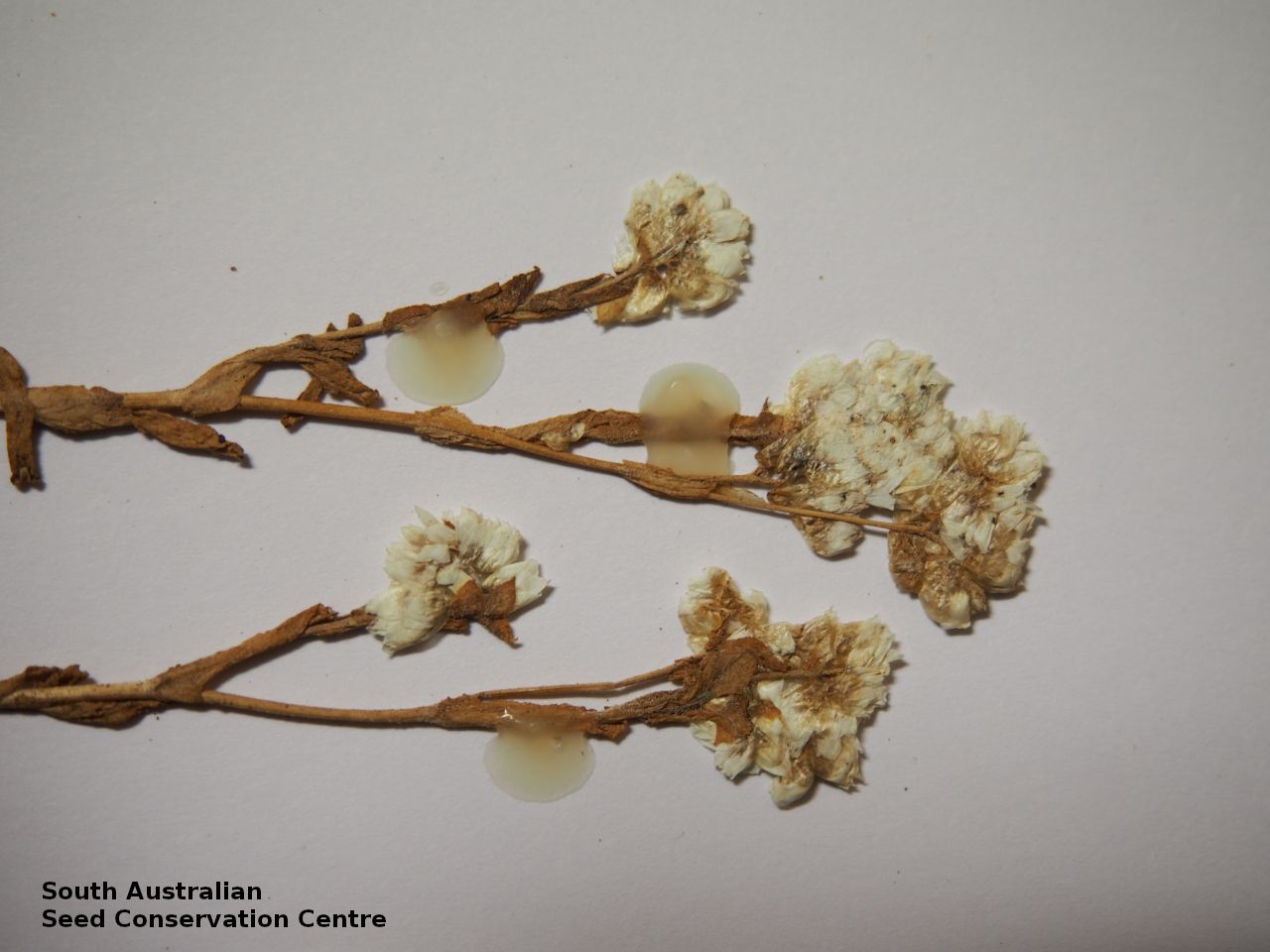
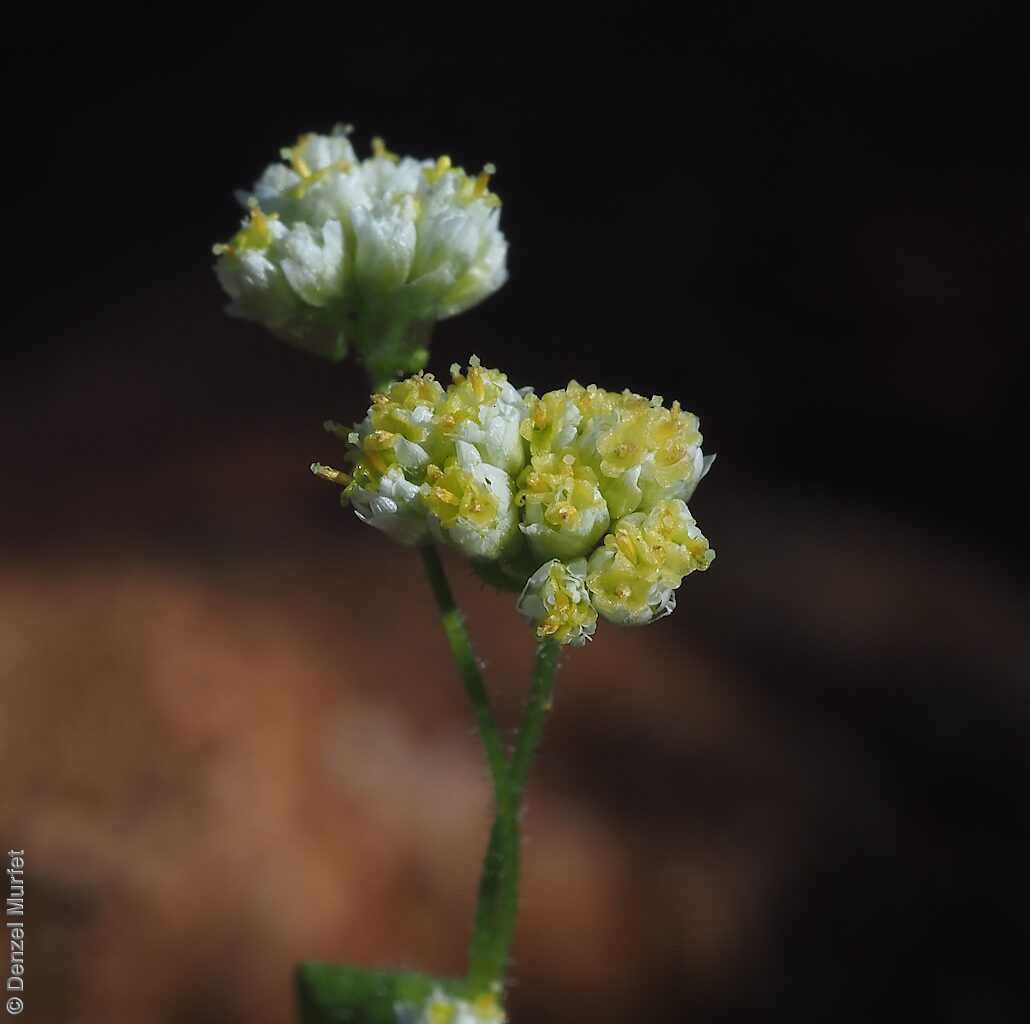
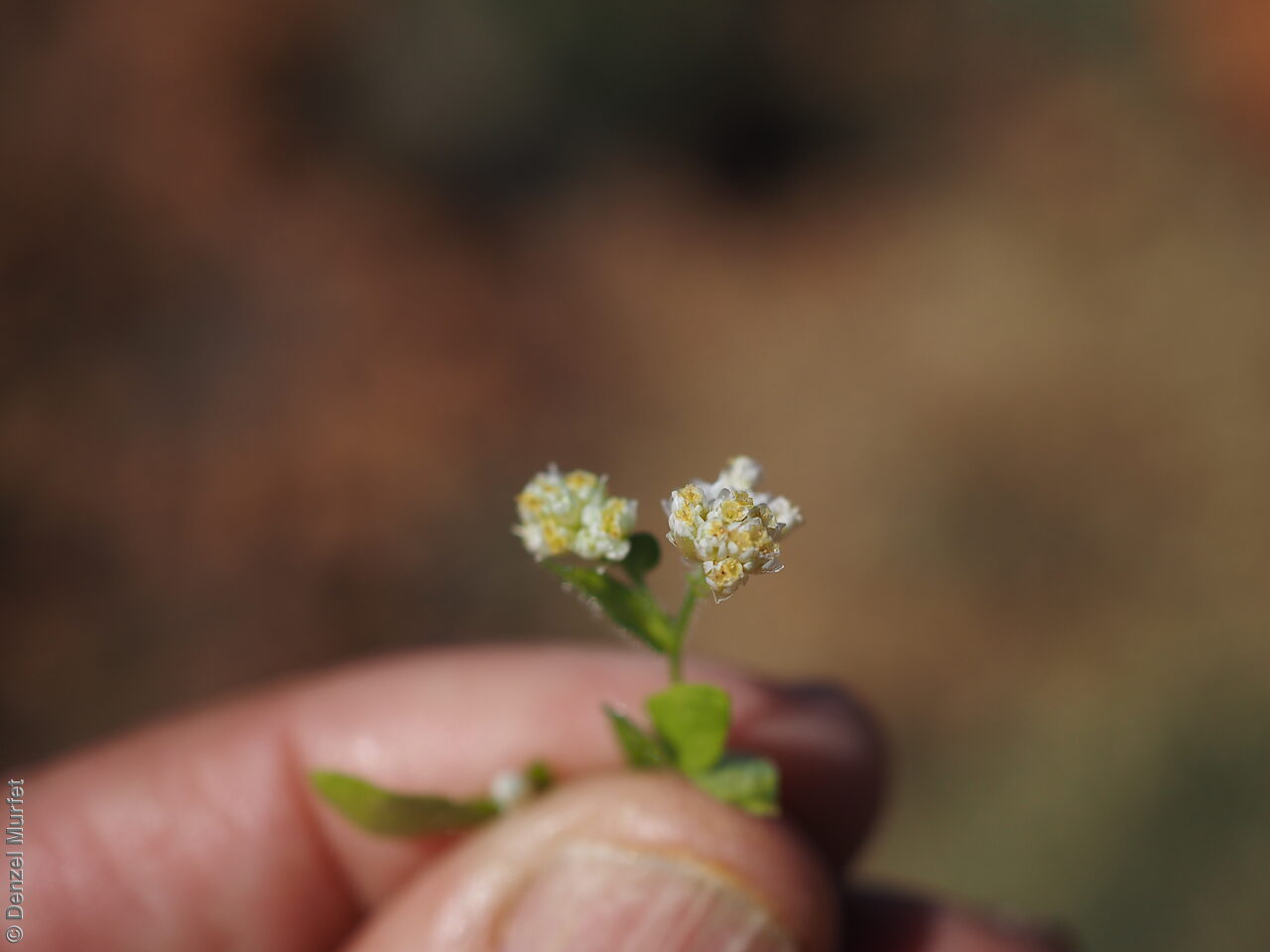
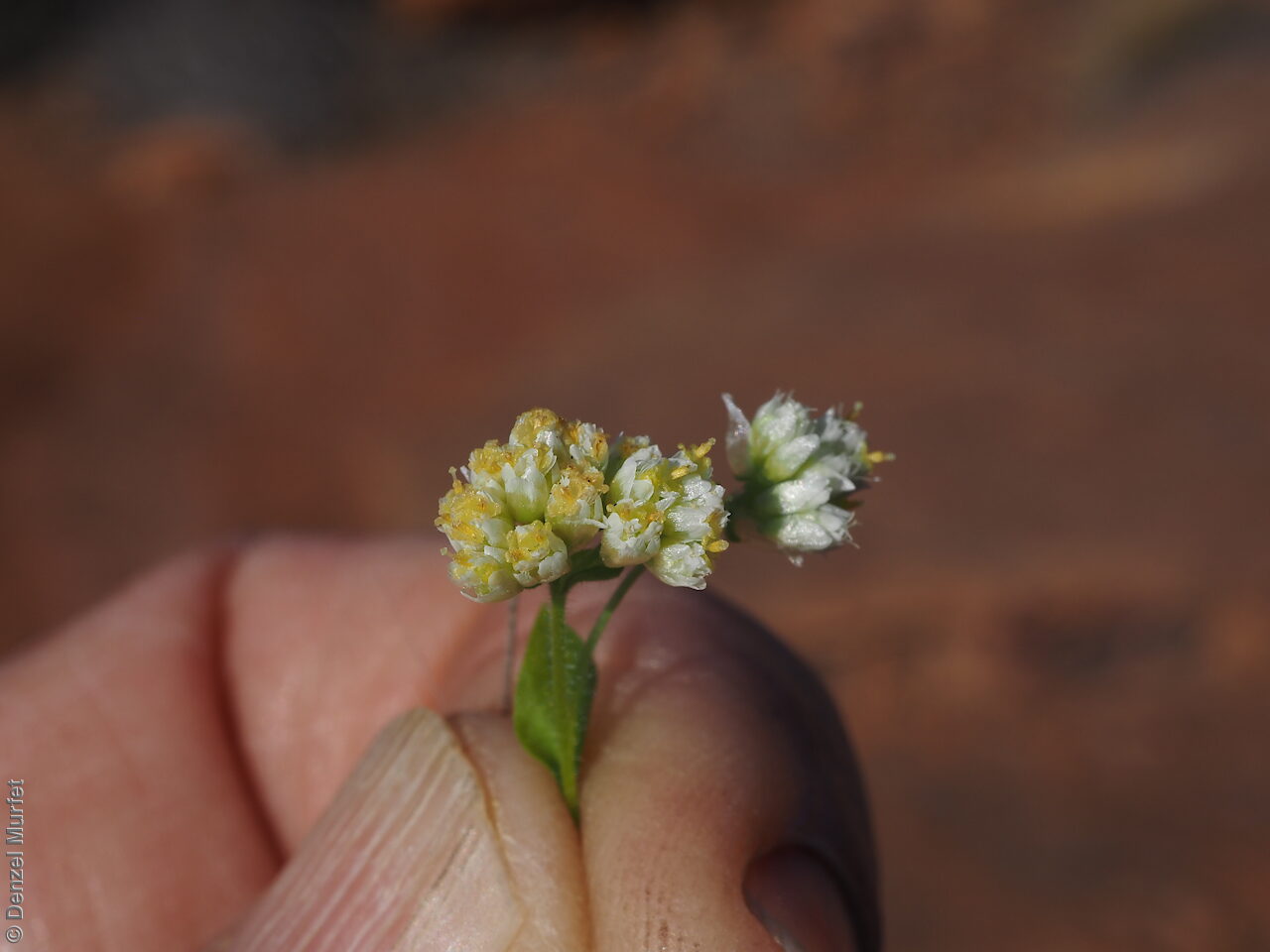
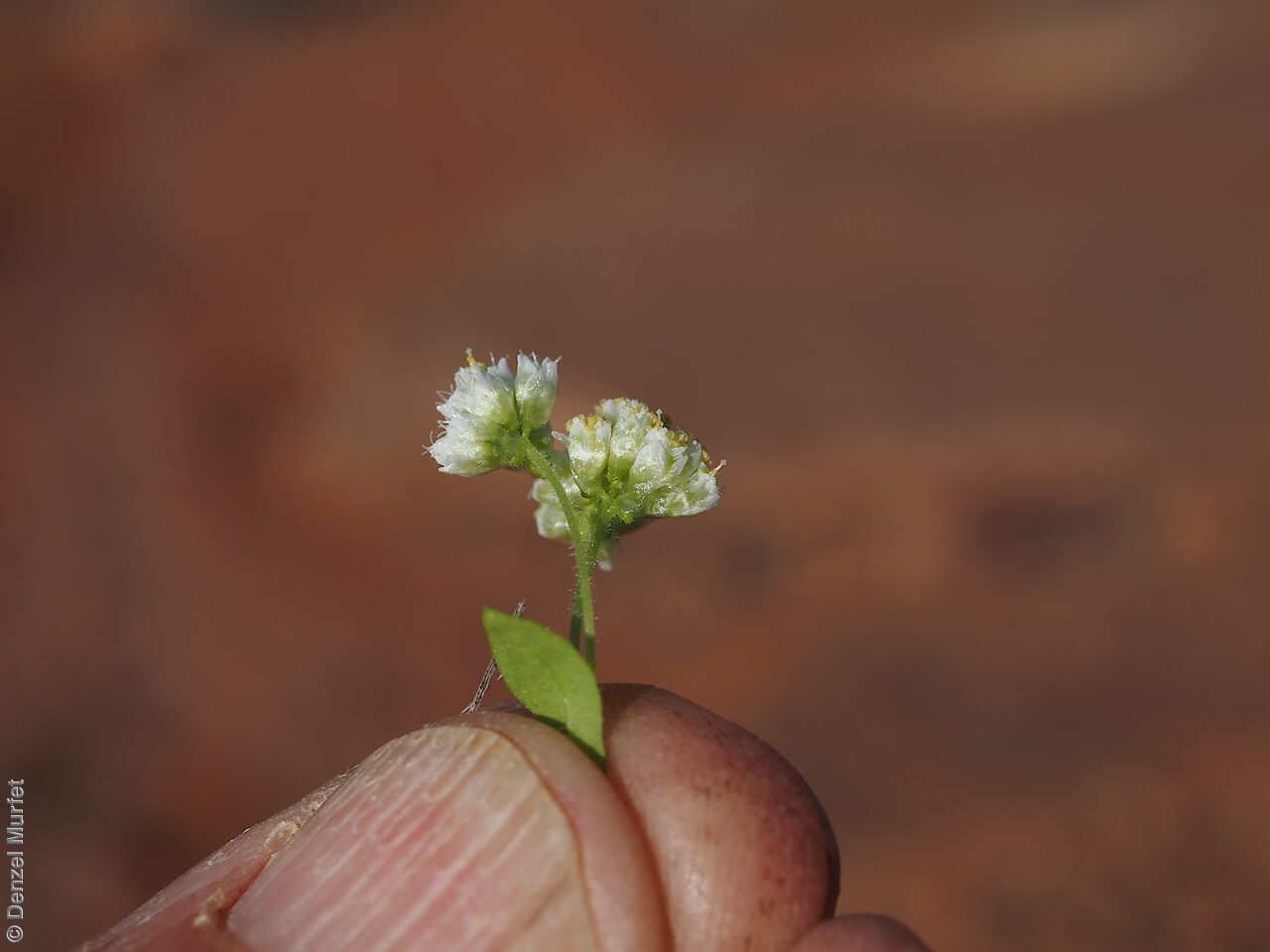
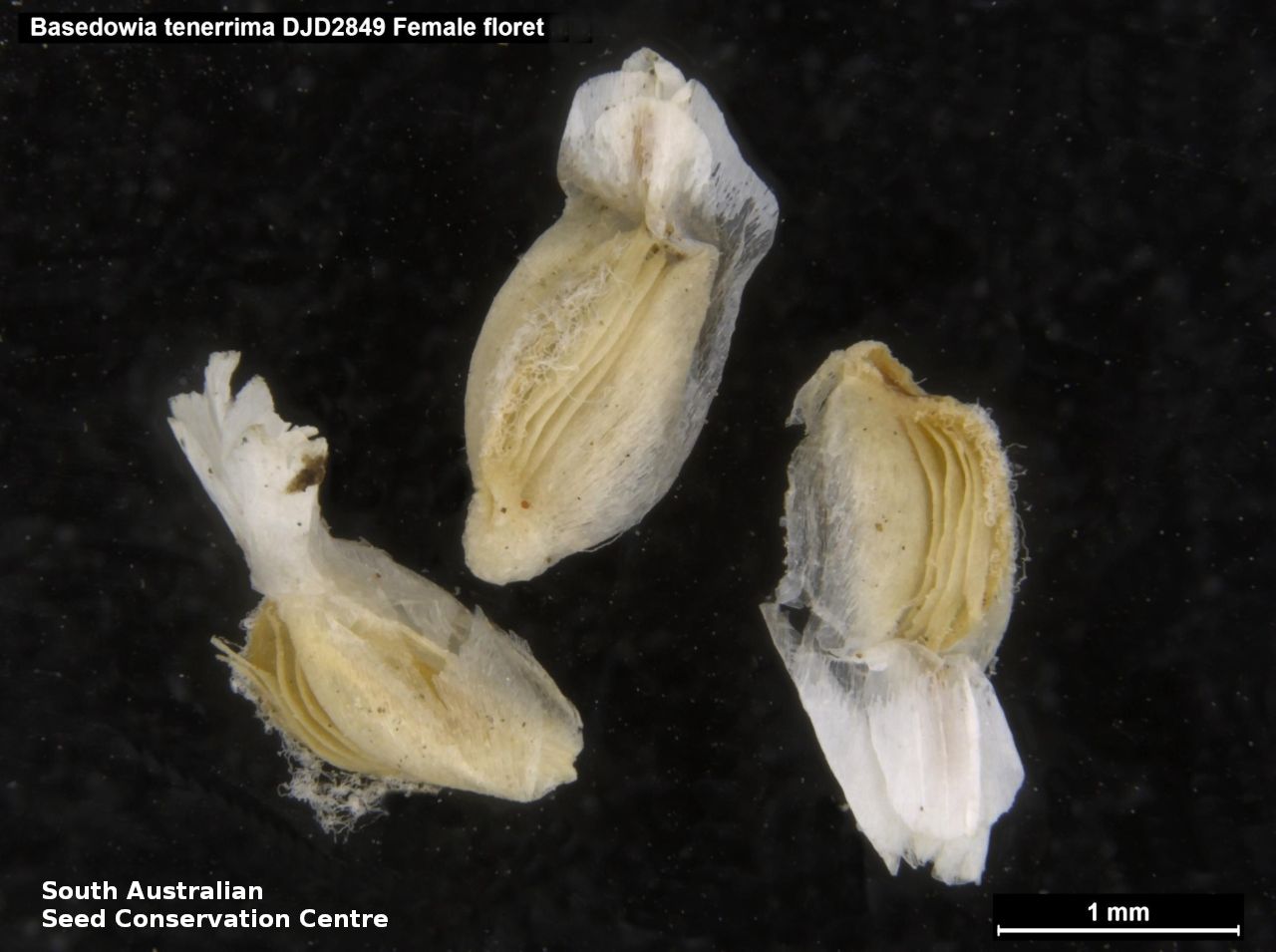
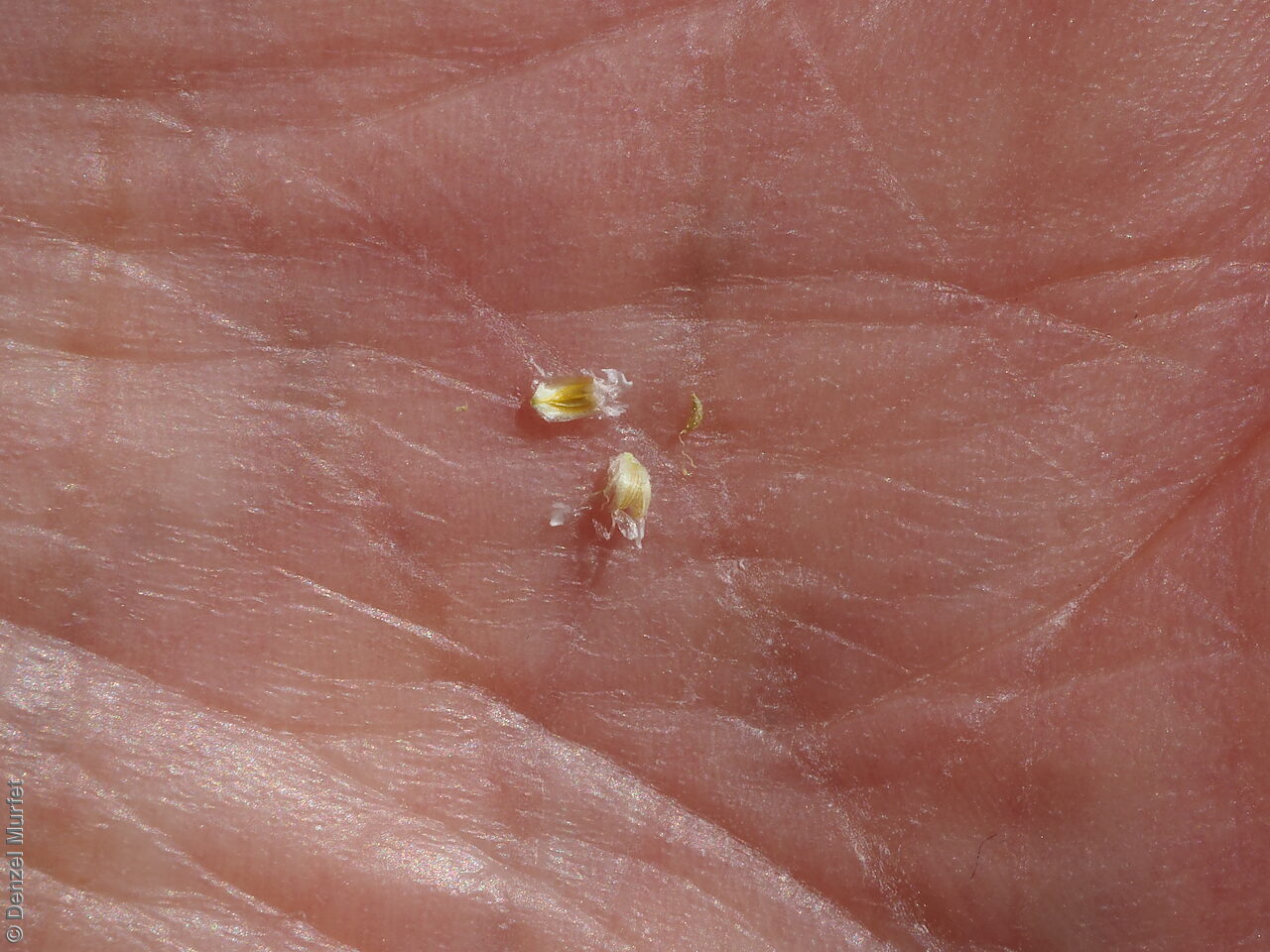
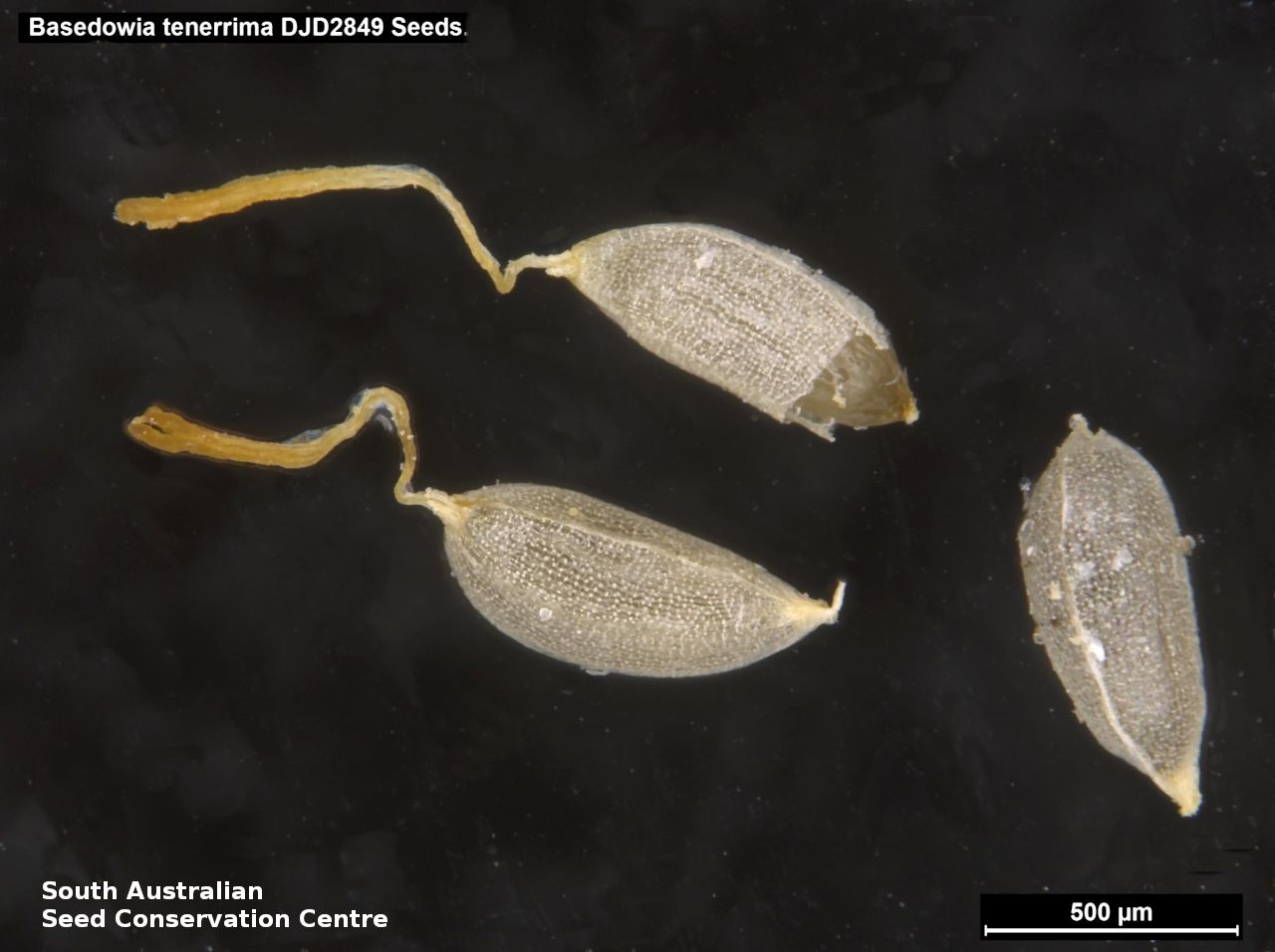

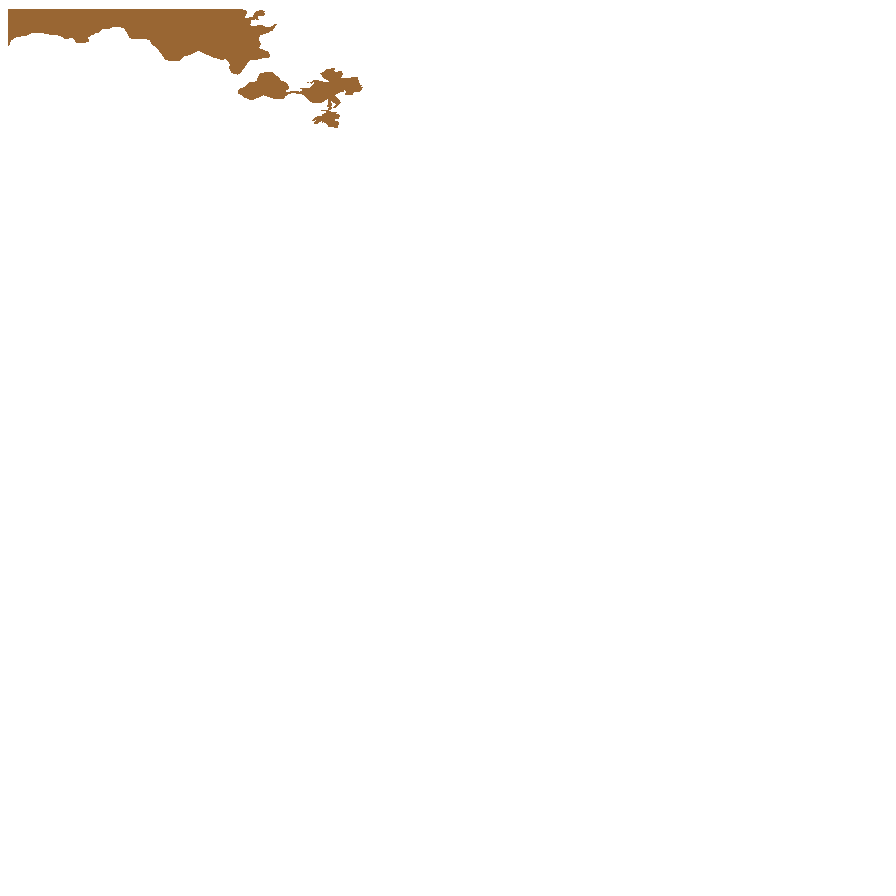
Prior names
Basedowia helichrysoides
Humea tenerrima
Etymology
Basedowia named after Dr Herbert Basedow (1881-1933), anthropologist, geologist, explorer, medical practitioner and botanical collector in central Australia. Tenerrima from the Latin 'tenerrimus' meaning delicate or tender; alluding to the species habit.
Distribution and status
Endemic to South Australia and found only in the north-west part of South Australia, growing among rocks in the Everard and Musgrave Ranges. Native. Rare in South Australia.
Herbarium region: North Western
NRM region: Alinytjara Wilurara
AVH map: SA distribution map (external link)
Plant description
Spreading annual daisy to 15 mm high with small, thin bright-green leaves and white rounded flower heads. Leaves are sparsely hairy and are partially wrapped around the thin stems to which they are attached. Inflorescent in clusters with white daisy flowers. Flowering between May and September. Fruits are papery daisy head. Seeds are tine, brown ellipsoid seed to 0.8 mm long and 0.4 mm wide. Seed embryo type is spatulate fully developed.
Seed collection and propagation
Collect seeds between August and November. Collect heads or whole plant that are drying off and turning brown. Place the heads in a tray for a week to dry. Then rub the heads gently with your hands to dislodge the seeds. Viable seeds will be long, fat and hard. Store the seeds with a desiccant such as dried silica beads or dry rice, in an air tight container in a cool and dry place. Seeds are non-dormant, viable seed should germinate readily.